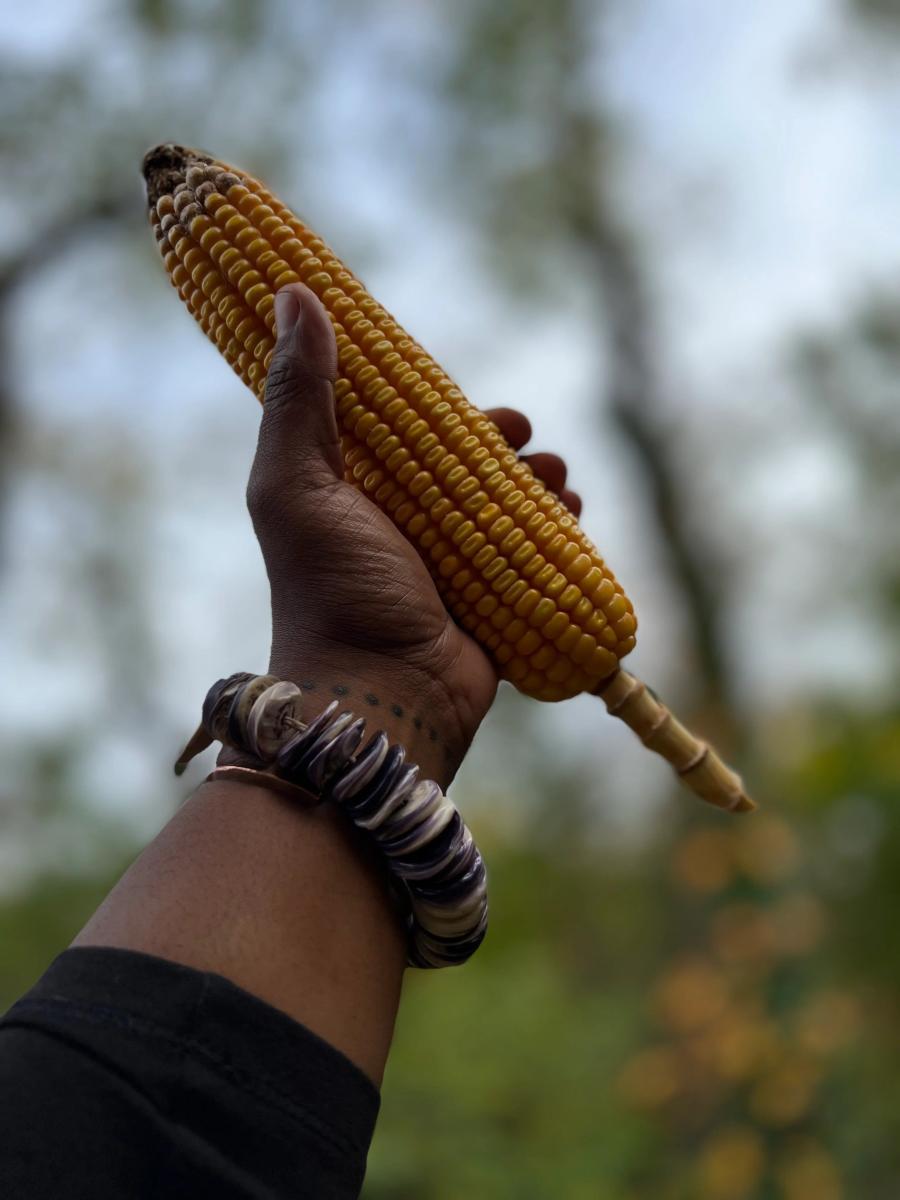
By Sophia Mitrokostas
A.J. Perry’s second novel, The Old People, is not a page-turner. And it doesn’t seek to be.
Situated in an indeterminate time and locale, Perry’s novel details the ways of the eponymous Old People. This community has simple needs: rope, fire, hewn stone and, perhaps most importantly, knots.
The seemingly simple act of tying of a knot is extended across generations of community and tradition, serving as a gateway into the intricate complexities and beautiful simplicities of the Old People’s world. In order for a knot to be tied, a hole must be dug. In order for a hole to be dug, a tool must be made. And so on until the various roles that each person plays in the workings of society are spun out into infinity, each a thread in a rope that lengthens with the passage of time but is never meant to be completed.
There is a meditative and almost hypnotic cadence to Perry’s writing. One beat of life follows another patiently and dependably. Perry’s prose style is spare and stripped of excess fat, eschewing linguistic acrobatics for raw simplicity. This is tightrope walk rather than a race to the finish line; a journey above the chaos, requiring stillness and presence of mind. The Old People is plotless in that it mirrors the plotlessness of life itself. These are people who have mastered the art of being for the sake of being, rather for the sake of getting somewhere. There is little forward motion in this community. Each person acts as a vital link in a cyclical journey of death and renewal, connecting the ways of the past with the needs of the present. In the writing of his novel, Perry was inspired by the care he believes Indigenous Peoples devote to the act of creation, saying that “the amount of love that the indigenous person puts into the making of every article of life - the effort that goes into every knot - is something that needs to be honored and upheld, because it is this very thing, this love, that will keep our humanity from perishing.”This spirit of loving slowness is perhaps exemplified by the process of crafting The Old People itself. A kānaka maoli Native Hawaiian, Perry took over 12 years to write what is a relatively quick read – except that he would insist that it shouldn't be. The Old People is a literary experience that insists the reader slow down and look around. Despite what he describes as our “efficiency-driven society”, he doesn’t lament the time it took to commit his art to paper. His is a book about proceeding in all things with mindfulness and joyful appreciation. As the author muses: “the world needs to slow down.”
For all the beautiful stillness and quiet appreciation of the bounty of life that is apparent in Perry’s island world, there is something vaguely troubling about the static nature of these Old People. Things are done as they have been done for thousands of years, and when there is a stumbling in the predictable pace of life in the community, the rain stops coming and the women cease giving birth. Nature itself seems to reject the community for having altered their predictable pattern of life. There is a breakdown of the old custom of “indirectness”, or the rejection of outright requests and demands. The culture of the Old People seems to suffer and wilt as the old ways are no longer observed. Perry treats this shift as a deterioration and a loss, and it certainly seems to be such when the people begin to be listless and unhappy. However, no society exists in a synchronic vacuum; change and adaptation does not invalidate culture, but sustains it through encounters with the unexpected and the unfamiliar. Regarding what distinguishes the Indigenous from the non-Indigenous, Perry states that“every human being is indigenous - or was at one time - to a specific place. But what fundamentally separates today's Indigenous Peoples from all the others is that we have made the continuous decision to stay.”On one hand, this concept of “staying” is problematic in that it binds Indigenous identity to the past, suggesting that to be Indigenous is to be a relic while the rest of the world moves on. Conversely, there is a sense of agency in the notion that Indigenous peoples have chosen one way of life over a multitude of others, and he goes on to clarify that there exists “an unfortunate tendency to define the world's original cultures in terms of what came later… all cultures deserve to exist on their own terms.” It is not, then, the static “staying” that defines the Indigenous, but the conscious selection of one way of being human in the face of countless alternatives. From Perry’s perspective, to be Indigenous is to retain “a distinct way of seeing the world” and to not be ever-willing to “abandon the familiar for the novel, to sacrifice tradition for progress, to give up on what is for the allure of what might be.”
Ultimately, Perry skirts the danger of presenting a romanticized enclave of ‘wise primitives’ through the overarching philosophy embodied in The Old People. The point of crisis experience by the Old People is symbolic of the plight Perry envisions modern society faces at this very moment. He writes: “the world is losing its direction; it needs to take the time to reflect and reassess the consequences of its current trajectory.” The Old People return to their traditional ways not simply because they are tradition, but because they are good ways. The story Perry sets forth is fundamentally one of critical self-reflection; modern society has an almost religious reverence for innovation and progress, but has perhaps forgotten that old ways can be good ways as well. The Old People is an appeal to reevaluate the knots we are tying and whether they are strong enough to carry the next generation from this world that we have made into the one we are creating even now.
A.J. Perry’s The Old People is published by Thames River Press and is available for purchase here.


